Since we started BIPOC Foodways Alliance and Immigrant Kitchen a question that sometimes comes up is why home cooking?
Why should people pay attention to home cooks when there are so many great restaurants and chefs around?
It’s a good question.
I have spent more than 20 years as a food writer, for a time going to just about every local restaurant opening that was deemed worthy (restaurants deemed worthy of food media is another conversation for a different day) and top-loading my travel itineraries with which restaurants I wanted to visit (I still do this, sometimes).
Like many avid eaters, what I’m going to eat in any given day is one of the first things I think of when I wake up, and one of the last I’m thinking about when I go to bed (what will I eat tomorrow?)
Restaurants are a huge component of this equation, and I would not want it to be any other way.
But when we only pay attention to, and eat in, restaurants we are missing out on a huge swath of what’s worth eating in this world. And for me, that just won’t do.
Most of us think of restaurants as not just a place to eat, but a place to hang out, a hobby even, and in many cases even a signifier of status-- what restaurants do I know about? Can I manage to get into very best of them? Do I know the names of the chefs? Do I know the chefs?
But restaurants are in fact a commodity:
commodity
[ kuh-mod-i-tee ]
Phonetic (Standard)IPA
an article of trade or commerce, especially a product as distinguished from a service.
something of use, advantage, or value
And when we commodify cooking, we are naturally going think of it as the product it has now become. What good is this to me? Is what I received “worth it” (as far as my pocketbook is concerned?)
And since commodification requires at least two parties (there are actually many, many more parties involved in restaurant cooking) the person (or people) selling you this food must now reduce their cooking— something imbued with art, history, geography, legacy, love, and so much more— to an object with a price tag.
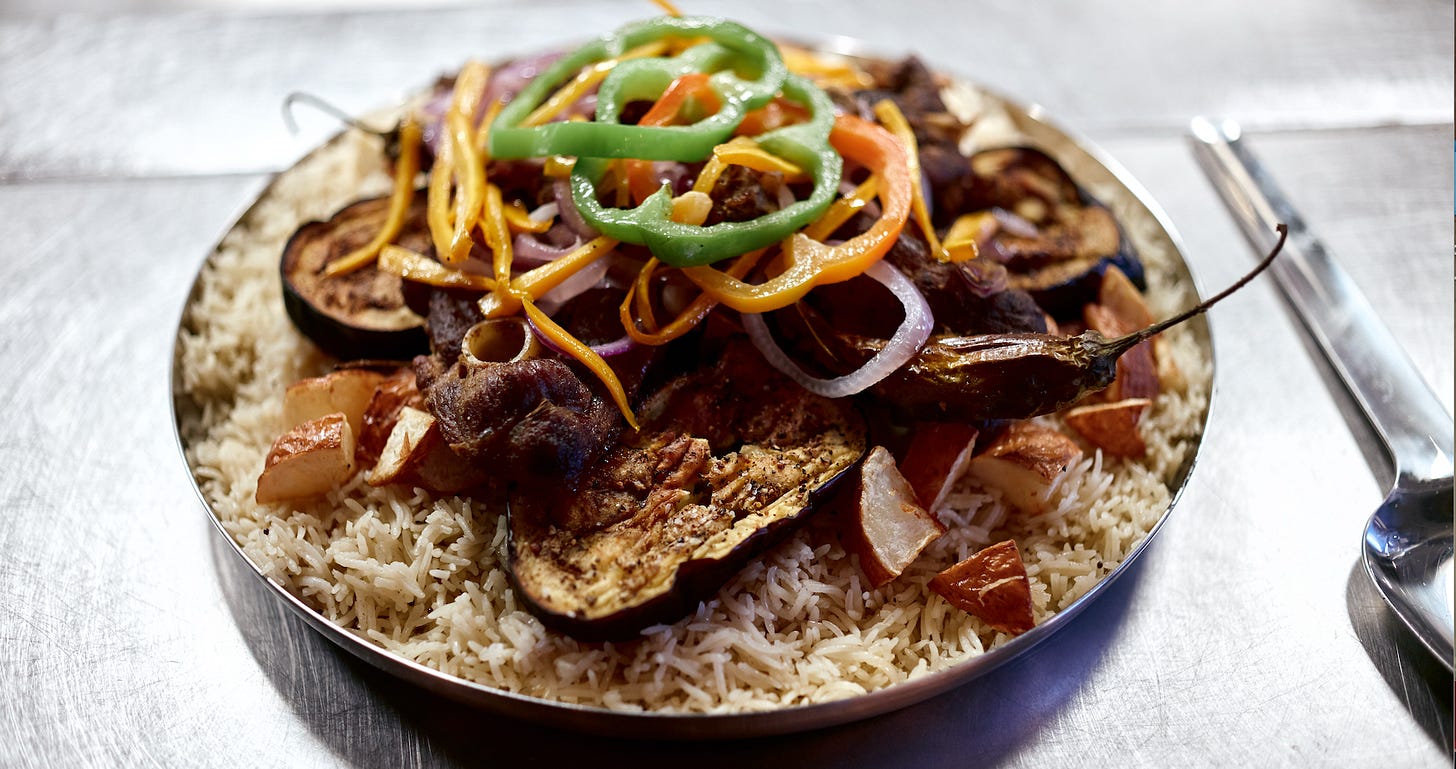
This is of course not entirely a bad thing.
I am so grateful after a long flight that I can settle in front of Netflix with some Tea House dumplings; that when we want to feel spoiled we can get a fat steak at Porzana, or that I can get a Gai Noi spice fix whenever I need one (which is often).
But if we go even deeper into the word “commodification” we get a peek into what happens when we turn the act of cooking into a monetary exchange:
In this case, it’s the loss of the social relationship that resonates, because the act of cooking automatically implies a relationship. Cooks usually want someone besides themselves to eat their food, and eaters want to be cooked for.
We want it so badly, we’re willing to pay for it, even though most cooking (home cooking) is done for free, in the spirit of gifting, or caregiving.
When cooks and eaters are separated from each other physically, which is almost always the case in restaurants, the relationship gets muddled.
Sure, at the very best restaurants, I do feel like I am a part of a relationship. For years, my “home” restaurant was Minneapolis’ Saffron (and its coming back!) When I walked in the door, my choice of cocktail, a sparkling wine, would be sitting on the bar for me, dripping with sweat beads, before my butt hit the stool. The proprietors, Sameh and Saed Wadi, became dear friends. Indeed, I would consider myself a “friend” of this restaurant.
But these restaurants are rare. Even in spite of its superiority, Saffron is long gone— not because the cooking wasn’t exceptional, or because the owners weren’t beyond dedicated to their craft. It’s because restaurants are a nearly impossible endeavor.
If your goal is simply to cook good food for people who will pay you to eat it (as Sameh Wadi did when he opened Saffron at age 22 cooking the food that he, yes, learned from his mom) opening a restaurant is almost always a bad idea. Profit margins for healthy restaurants hover around five percent and about 80 percent close within five years. There is no truly viable business model for most independent restaurants, regardless of how good the cooking may be.
And if its good cooking you’re after, again, I’d suggest looking beyond the restaurant. While its true that not everyone cooks so well that their cooking could be considered at a professional level, I would say that many, many people do. Many of the best meals I have ever eaten have been from the hands of a home cook, not a professional chef.
Most of the dedicated home cooks I have ever met are extraordinary at their craft. (Please note that I am intentionally using the word “cook” instead of “chef,” the latter being a word that I designate for people who do indeed run professional kitchens, not to be confused with people who cook in them. Chefs are the bosses. There’s a difference.)
But the boss of a home kitchen is no small thing. I have said over and over again that women rule the home kitchen, and with few exceptions, they are the people who inspire and teach the mostly male cooks who own and operate some of our favorite and best known restaurants. Men mostly get involved with cooking once it is monetized.
Here is another important point: some of the very best dishes in the world will never see a restaurant kitchen because they are too delicate, specialized, or time-consuming to execute in environments that have to meet the demands of large or homogenous audiences. This story I produced on chef Yia Vang’s (of Vinai) mother’s cooking is a great example of this.
A dedicated home cook might be heartbroken for days if her food isn’t liked or goes uneaten. She will foist food on your plate with the zeal of an evangelist. The best home cooks present dishes for highly personal reasons, the technique and ingredients having been honed for years, if not decades.
As we travel around the country, eating in restaurants in every city from coast-to-coast, we can’t help but notice how many American restaurant menus currently read like this (AI generated) one:
HIPSTER & HERB
A Standard American Restaurant
STARTERS / SMALL PLATES
Charred Shishito Peppers with Smoked Sea Salt & Lemon Aioli
Beet Tartare with Pickled Shallots, Cashew Crema & Sourdough Crisps
Wild Mushroom Toast on Grilled Country Loaf with Herbed Goat Cheese
House Ferments Plate – seasonal pickled vegetables, krauts & kimchi
Local Cheese & Cured Meat Board with Honeycomb, Nuts & Preserves
Heirloom Tomato Gazpacho with Basil Oil & Microgreens (seasonal)
🥬
SALADS & BOWLS
The Forager: Mixed greens, wild rice, roasted squash, dried cranberries, candied pecans, maple-sherry vinaigrette
Charred Caesar: Grilled romaine, shaved parmesan, anchovy vinaigrette, sourdough croutons
Grain Bowl: Quinoa, kale, roasted beets, sunflower seeds, tahini dressing (add egg, tempeh, or grilled chicken)
Local Greens & Flowers with Edible Blossoms, Fennel, and Lemon Vinaigrette
🍔
SANDWICHES & HANDHELDS
Grass-Fed Burger with Smoked Cheddar, Arugula, Pickled Onion & Garlic Aioli (Brioche or GF Bun)
Fried Oyster Mushroom Po’ Boy with Cajun Remoulade on Ciabatta
Pasture-Raised Chicken Banh Mi with Kimchi Slaw & Chili Mayo
Lentil-Walnut Veggie Burger with Avocado & Cashew Cheese
Served with Duck Fat Fries, Sweet Potato Chips, or a Side Salad
🍽️
MAINS
Seared Local Trout with Lemon-Herb Farro & Asparagus
Braised Heritage Pork Shoulder with Creamy Polenta & Apple Mostarda
Smoked Eggplant Lasagna with Almond Ricotta & Tomato Confit (vegan)
Grilled Flat Iron Steak with Chimichurri, Roasted Fingerlings & Charred Broccolini
Wild Rice Risotto with Seasonal Veggies, Parmesan & Poached Egg
The charcuterie board, the ubiquitous burger, the Caesar Salad, the “handhelds,” the bowls, generic cultural influences from Southeast Asia to Spain getting mashed up in one kitchen— the homogenous predictability of the Standard American Restaurant reflects the predicament of those restaurants— offering all things for all people in order to keep the lights on.
Specialized restaurants in the US are fewer and harder to find, and I believe that if it’s “authenticity” (a fraught word in food, but I’m using it intentionally here) we seek in a food experience, look no further than home cooking.
When we take away the pressures of what a restaurant must achieve, food can be what it was always meant to be— an anti-commodity. A true speciality. Cooked with care, purpose, nourishment, and perhaps most importantly— story.
I realize that it’s a bit ironic that we are monetizing home cooking with our Immigrant Kitchen dinner series, but it’s important to note that our events are not for profit. All proceeds go to our co-hosts, our creators, and the expenses involved in making these dinners possible, breaking even at the end.
Perhaps all restaurant or restaurant-like experiences should be based on a nonprofit model. Americans rely on restaurants to a degree that they act almost as a public service. And yet, restaurants also rely on a plantation model, where most of the labor is unseen, exploited, and underpaid— another huge problem with restaurants.
Join us on June 4 as Elsa & Jeremy Moran + Areli & Alex Gadea Dominguez present “Masa Makes Family,” a home cooking dinner experience that explores many of these themes.
We will observe how mothers pass culinary knowledge on to their sons, how food can be truly imbued with story, and most importantly, how when applied in the right spirit— sharing— cooking can bring us together like almost nothing else.
Click here for tickets.
See you there!




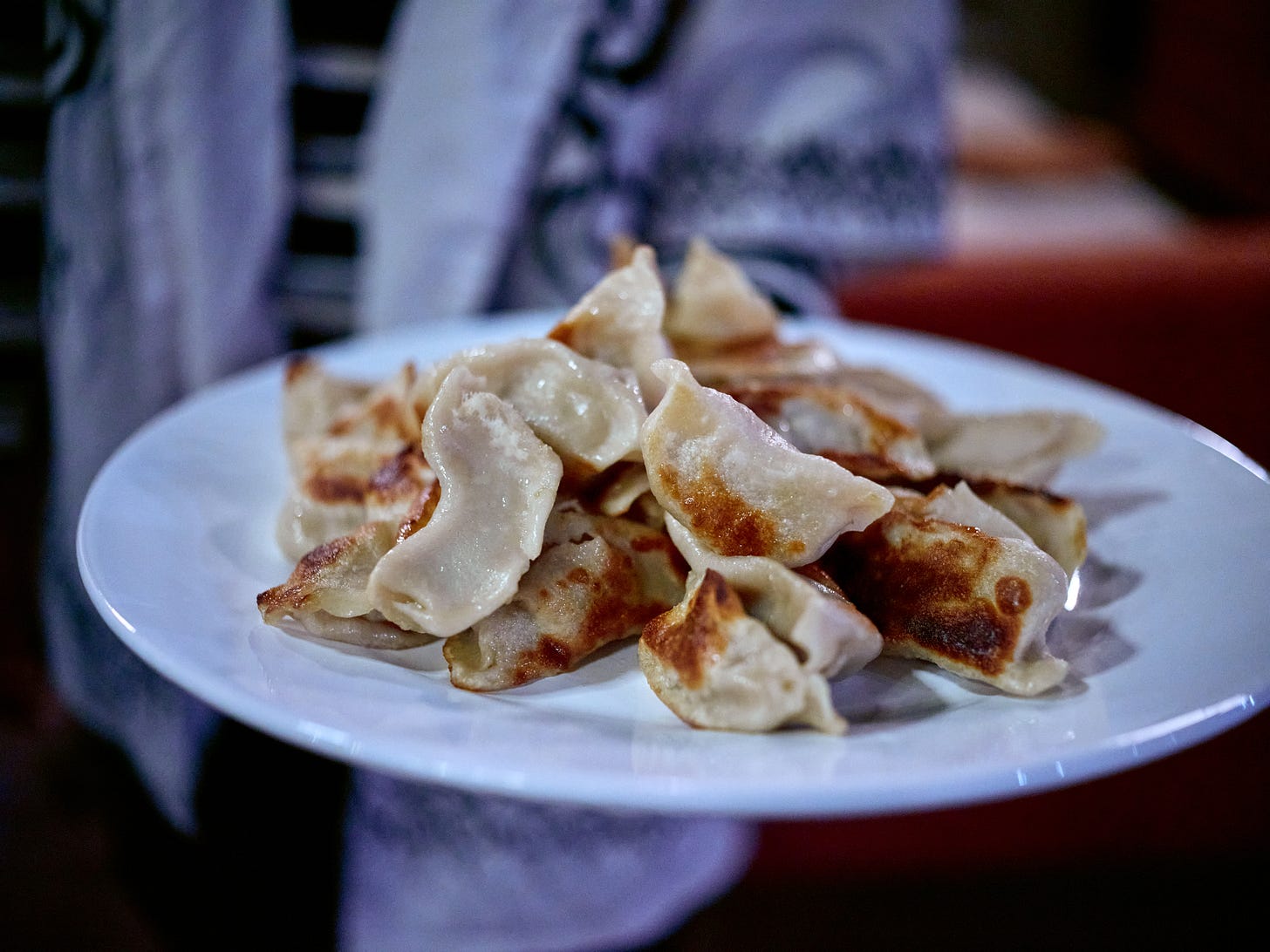


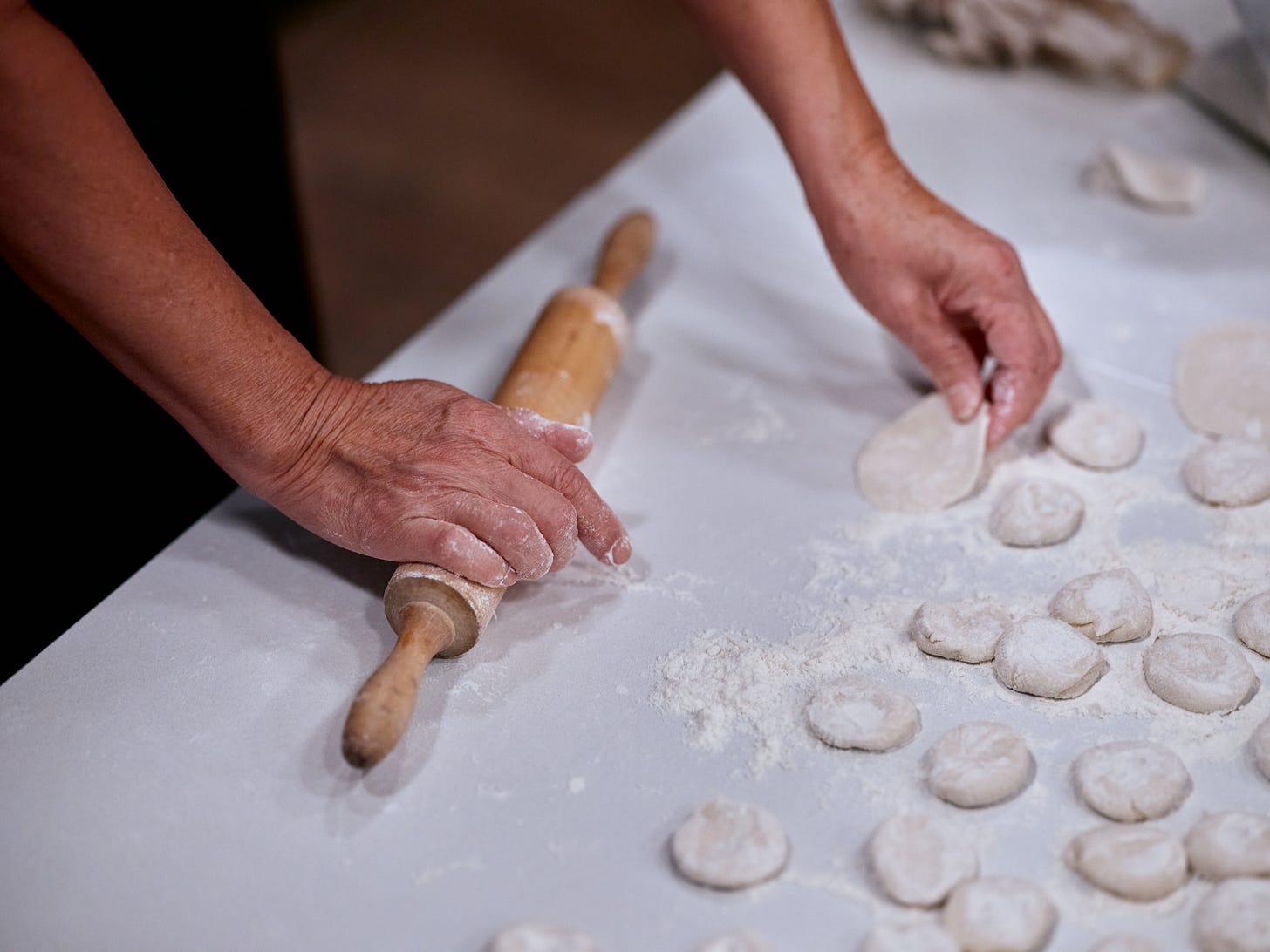
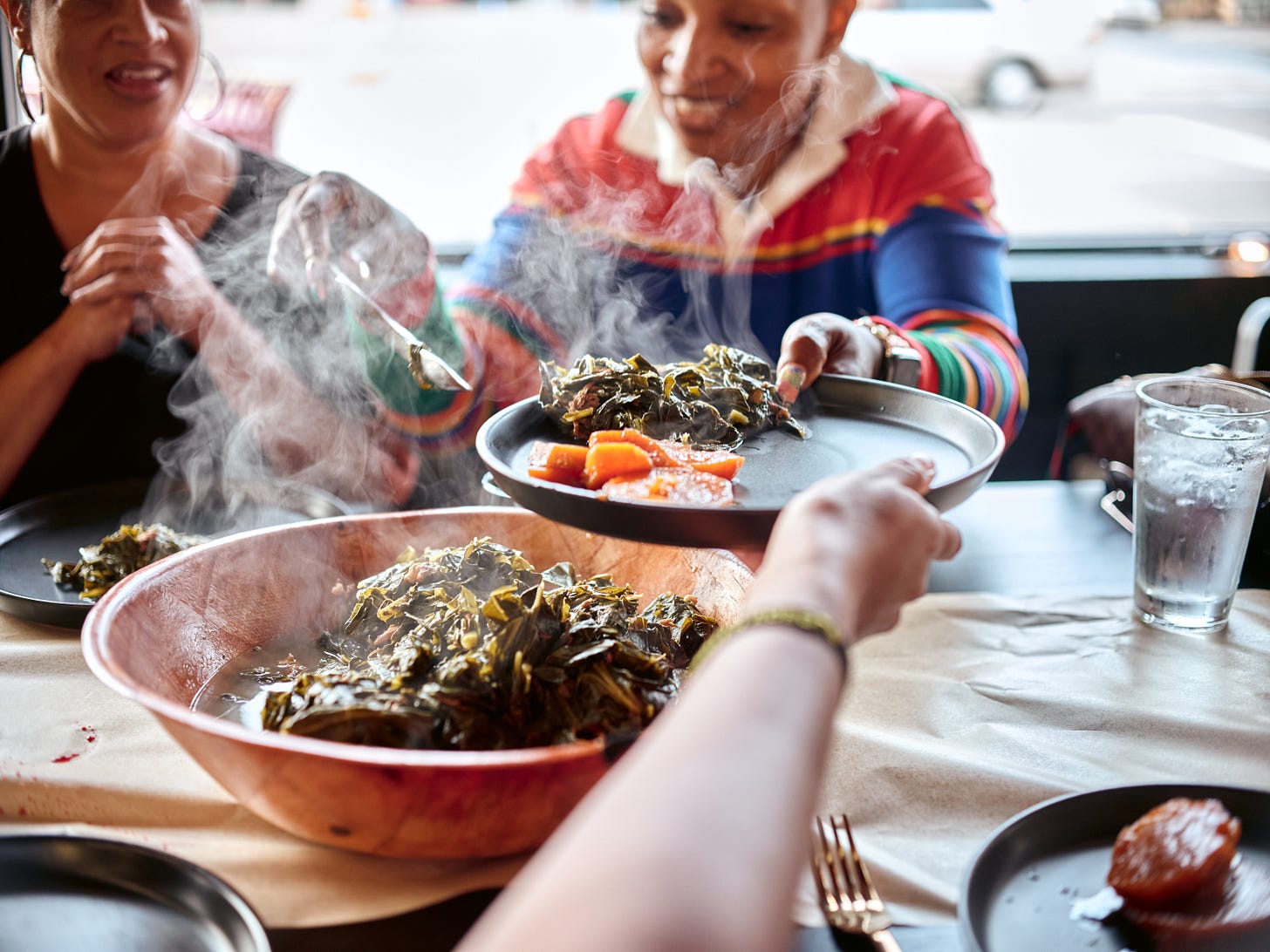
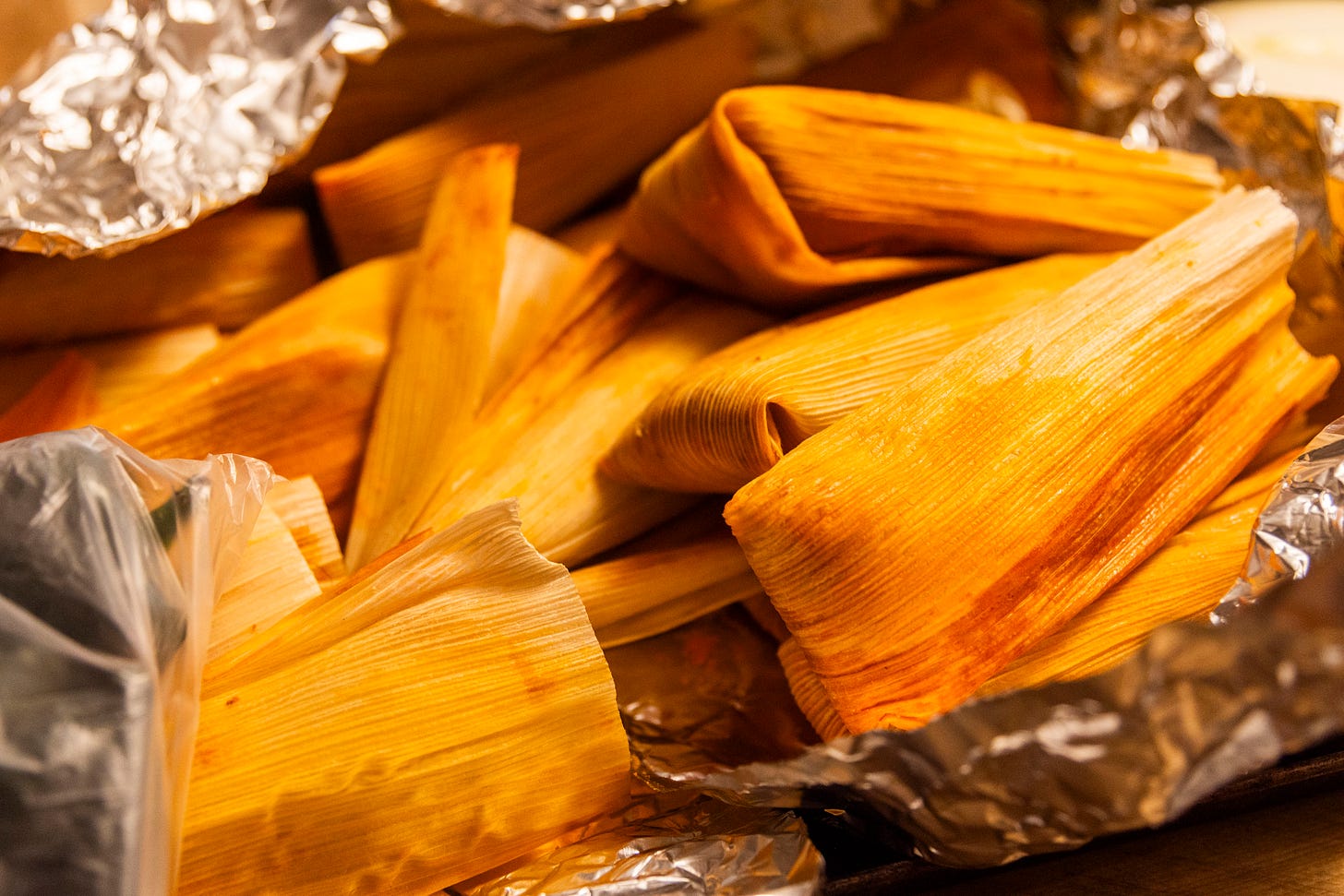
Cooking at home is also a space to share traditions, tell stories, and have a moment with friends and family outside the hustle of others. I love a good restaurant meal, but I cherish it when someone is willing to make the time to cook for me at their table.